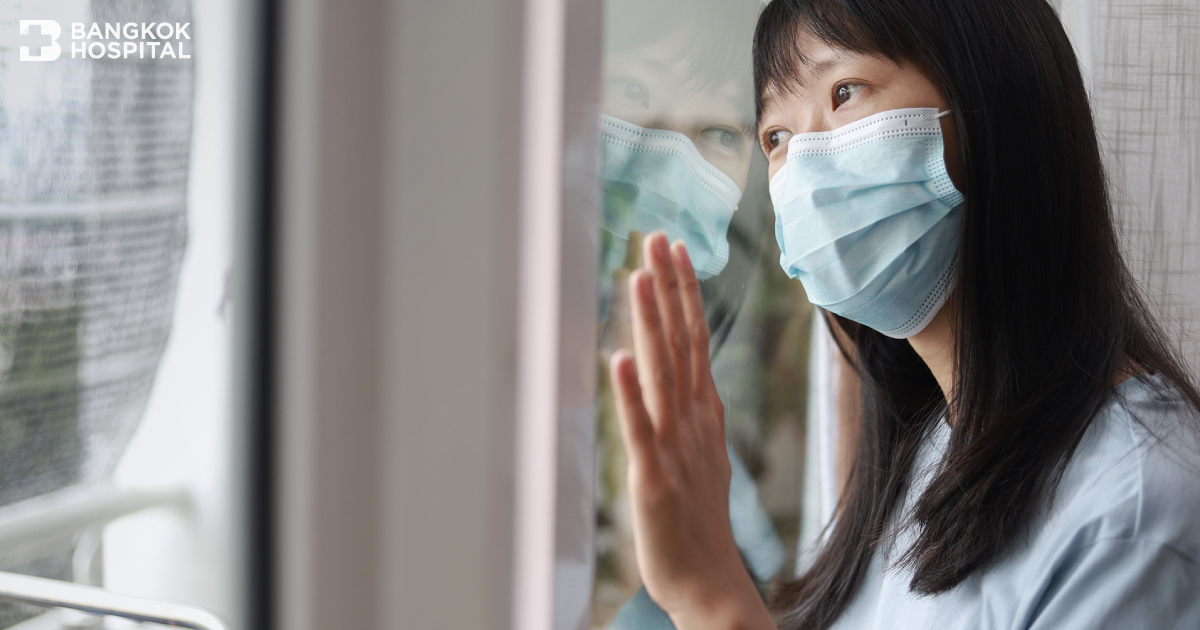As we all know, the number of COVID-19 patients has been increasing continuously. Therefore, if you are diagnosed with COVID-19, self-assessing whether you belong to the green, yellow, or red patient groups in order to receive appropriate treatment can help reduce severity and prevent possible fatalities.
### Assessing Symptoms for Green Group Patients
**Green Group Patients** are those with COVID-19 who are asymptomatic or have mild symptoms, including:
– Low fever
– Cough
– Sore throat
– Runny nose
– Loss of smell, loss of taste
– Red eyes
– Rash
– Diarrhea
– Normal breathing, not tired
– No pneumonia
– Can be treated in isolation at home (Home Isolation), Hospitel, Community Isolation, field hospitals, and various hospitals
### Assessing Symptoms for Yellow Group Patients
**Yellow Group Patients** are those with COVID-19 who have moderate symptoms, including:
– Fatigue
– Chest tightness
– Shortness of breath
– Difficulty breathing, rapid breathing
– Coughing and feeling tired
– Dizziness
– Vomiting
– Pneumonia
– Diarrhea more than 3 times a day
– Complications due to risk factors or chronic diseases such as being over 60 years old, chronic obstructive pulmonary disease, other lung diseases, chronic kidney disease, heart and vascular diseases, stroke, uncontrolled diabetes, obesity (weight more than 90 kg), cirrhosis, and low immunity
– Should be treated at a hospital

### Assessing Symptoms for Red Group Patients
**Red Group Patients** are those with COVID-19 who have severe and critical symptoms, including:
– Constantly feeling short of breath
– Unable to speak in full sentences
– Chest pain when breathing, difficulty breathing
– Constant chest tightness
– Unresponsive, slow to respond
– Unconscious
– Pulmonary edema
– Severe pneumonia
– Decreased oxygen levels
– Should be treated at a hospital as soon as possible
### Preparing for Treatment When Having COVID-19
– Call 1330, 1668, 1669 to receive treatment, providing detailed information and symptoms
– Isolate yourself from others
– Avoid leaving your residence or traveling across provinces
– Wear a mask at all times and use personal items separately
– Closely monitor your symptoms. If you have a fever, take paracetamol and use a wet cloth to reduce the fever
– Clean your hands with soap or alcohol every time, especially after using the bathroom
– Eat a balanced diet from all 5 food groups, stay relaxed and not stressed
– Prepare personal belongings in case you need to be hospitalized, including clothes, personal items, essential items (e.g., feminine hygiene products), medication for chronic diseases (if any), mobile phone, charger, and necessary personal utensils (e.g., plate, bowl, spoon, fork, glass, water bottle) enough for 14 days
However, if a COVID-19 patient’s condition worsens, they must be under medical care as soon as possible.

Assessing Symptom Severity with COVID-19
2 minute(s) read
